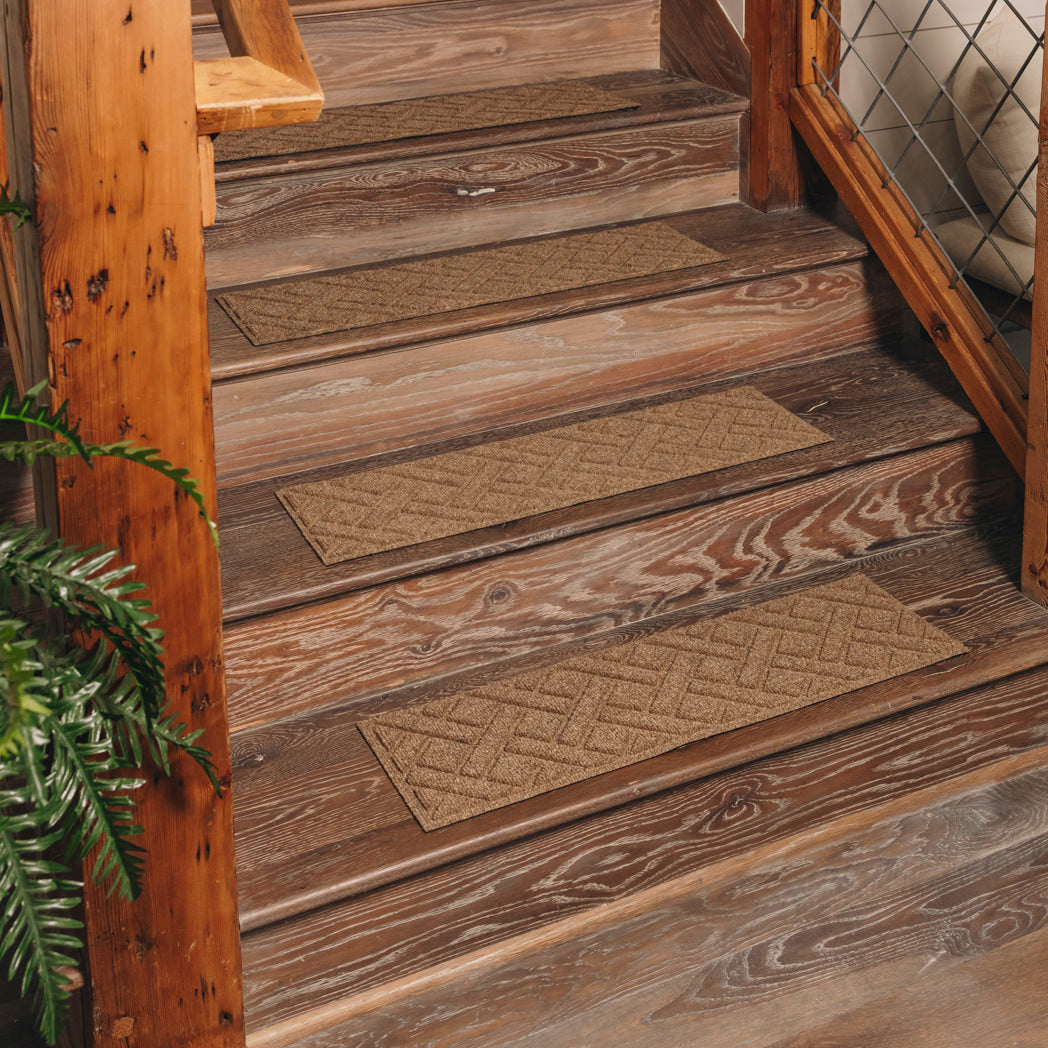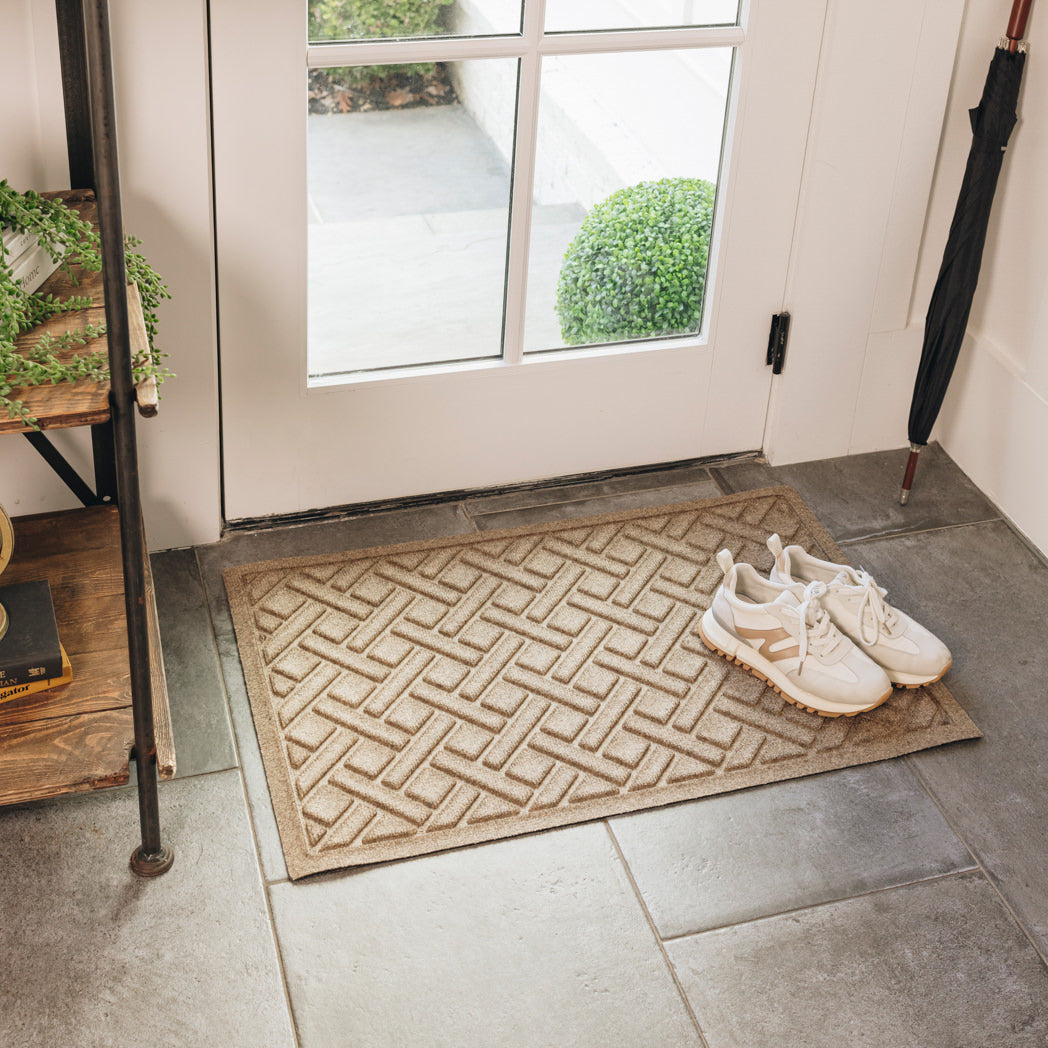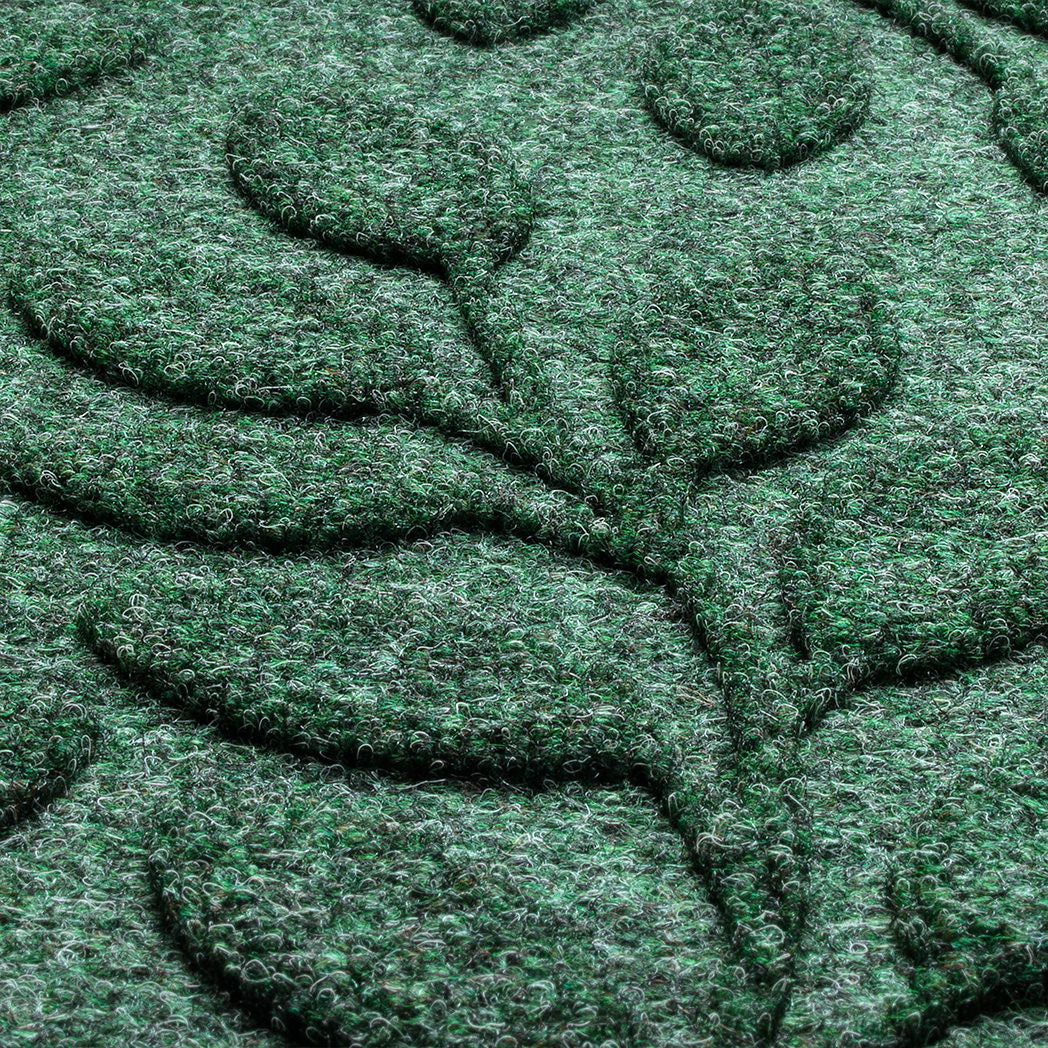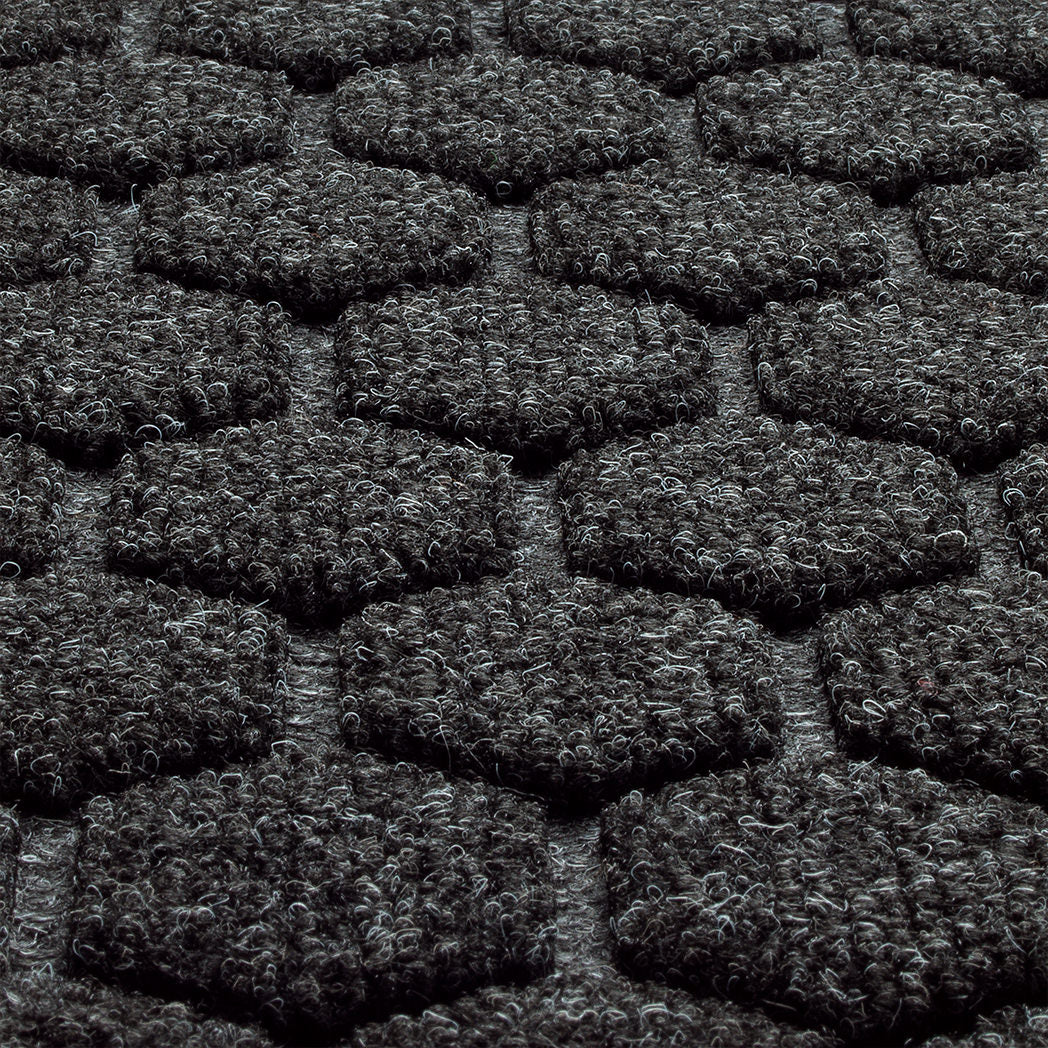Your eyes aren't playing tricks on you, it could be your lighting.
The type of lighting in your space can make your WaterHog mat look lighter or darker and give it a blue, orange, or green tint. But it's not just the lighting, wall and floor colors, furniture, and even the time of day and weather can alter how your mat appears.
To show you what we mean, we've taken a camel color WaterHog and photographed it in four common light settings. But most of times, the light will vary from household light bulbs to daylight.

That's right - both are camel.
Even your floors and walls can affect your mat color.
This effect is due to the way light interacts with both the mat and the surrounding environment. Darker colors tend to make mat colors appear more vibrant, and vice versa.

Take a glance at all WaterHog colors.
From Far Away, You'll Never Know

But Look Closer...
Every WaterHog is Many Different Colors
It's not a single solid color, but many different color fibers that give the WaterHog surface it's unique appearance. For instance, Evergreen consists of several different shades of green, white, and black. And charcoal is several shades of grey, black, and even white!

Not confident in your color? Let's dive deeper...
Is there a best color for a doormat?
As all our mats are designed to be stain & fade resistant, there is no bad choice. However, certain colors may have practical or aesthetic benefits, such as:
- Darker colors can hide dirt and stains better, making them ideal for high-traffic areas or outdoor use.
- Bright or light-colored mats may need more frequent cleaning, but they can brighten up a space or create a fresh, airy look.
I have an older WaterHog, but I want to buy a new one to match, will they?
This is a common question, and the answer is - it depends.
If you're looking for an exact match, the answer is maybe not. The way we make a WaterHog is still very much a manual process, right down to the way we mix and assemble our fibers. It's not an exact science and never will be.
We do have a set of color standards that include a level of tolerance that we abide by to ensure that all surface colors for WaterHog fall within a certain range.
While we are highly consistent, there is always a chance for a slight variance in color, especially between mats that are purchased years apart.
So if you're more of a "go with the flow", you're all good. If you're a "it better match or I'm gone", you may want to reconsider.
Remember, our team is always here to help so if you have any questions on color, don't hesitate to reach out via the chat feature or by email.
How does my floor impact the color of my mat?
- Contrast: Dark mats on light floors create bold contrast, while light mats on dark floors look bright. Similar colors make the mat blend in.
- Warm vs. Cool Tones: Warm floors can dull cool mats, while cool floors enhance warm mats.
- Glossy vs. Matte: Glossy floors make colors brighter, while matte floors soften them.
Can the color of a mat impact the mood or energy in a room?
- Blue: Calming, peaceful, and serene.
- Camel & Grey: Neutral and grounding, suitable for modern, minimalist spaces.
- Black: Sleek, elegant, and timeless.
So the surface fibers of a WaterHog aren't a single solid color?
Correct, the surface of a WaterHog is actually made up of many different color fibers. This is done for several different reasons, structure and performance being the most important.
It can be more pronounced in some colors like evergreen and bluestone, and less noticeable in colors like camel and medium grey.
Make sure you look at the zoom photos of the surface detail on every buying page. And if having a single solid color is a non-negotiable, a WaterHog is probably not right for you.










